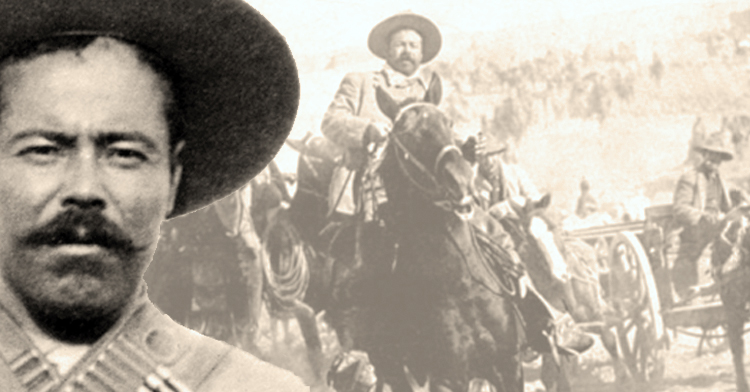“On January 8, 1916, Pancho Villa also known as “The Centaur of the North” proposed in a letter to Emiliano Zapata to invade the United States”.
Between 1913 and 1919, Doroteo Arango, also known as Francisco “Pancho” Villa and Emiliano Zapata exchanged more than twenty letters. But one never arrived. In this letter dated January 8, 1916, the “Centaur of the North” proposed Emiliano Zapata to invade the United States.

Villa and Zapata with some of their troops in Mexico City (Photo Agustín Victor Casasola-1914)
“We have decided to prepare and organize ourselves properly to attack them in their own burrows,” the document states. The invasion of the Villista forces into the United States was the response of Pancho Villa to the support of the Americans to Carranza in the Mexican civil war and had a particular revenge component. That was to capture and to fusillade Sam Ravel, an American arms dealer who had defrauded Villa by selling him unusable ammunition at the express request of the United States President Woodrow Wilson.
In January 1916, Villa and his men kidnapped 18 Americans from a Mexican train and slaughtered them. A few weeks later, Villa led an army of about 1,500 guerillas across the border to a brutal raid against the small town of Columbus, New Mexico. Villa and his men killed 19 people and left the town in flames. That day, the messenger, a man of Villa confidence, fell dead, the 9th of March of 1916, in the middle of the attack against Columbus, with the letter.

Doroteo Arango aka Pancho Villa
In response to the invasion, President Wilson ordered General John Pershing to lead 6,000 American troops into Mexico and capture Villa. Reluctantly, Carranza agreed to allow the U.S. to invade Mexican territory. For nearly two years, Pershing and his soldiers chased the elusive Villa and had several bloody skirmishes with the rebels, but Pershing was never able to find and engage Villa.

General J. Pershing
Finally losing patience with the American military presence in his nation, President Carranza withdrew permission for the occupation. General Pershing returned to the US in early 1917, and three months later left for Europe as the head of the American Expeditionary Force of World War I.
After helping remove Carranza from power in 1920, Villa agreed to retire from politics. His enemies assassinated him in 1923. The resentment engendered in Mexico by the efforts against Pancho Villa, however, did not fade with his death, and Mexican-American relations remained strained.
Almost six decades later, the letter was rediscovered after it was remitted to the US State Department and passed through the National Archives in Washington D.C. It was then that some historians took it back as a relevant document to understand the Mexican Revolution.
Some historians indicate that Zapata’s response would have been negative since they underline that the safe area of action of Emiliano Zapata was Morelos, Puebla and the state of Mexico, so the displacement to the north would have been very expensive, however, there are others who believe the response of the “Caudillo del Sur “would have been positive. This same historians in Mexico and the United States suspect the veracity of that document and say it could have been planted by the US government, while others advocate the historical relevance of the document under the argument that “it shows the way in which the political movements of that time were carried out. ”
San Miguel Times
Newsroom

